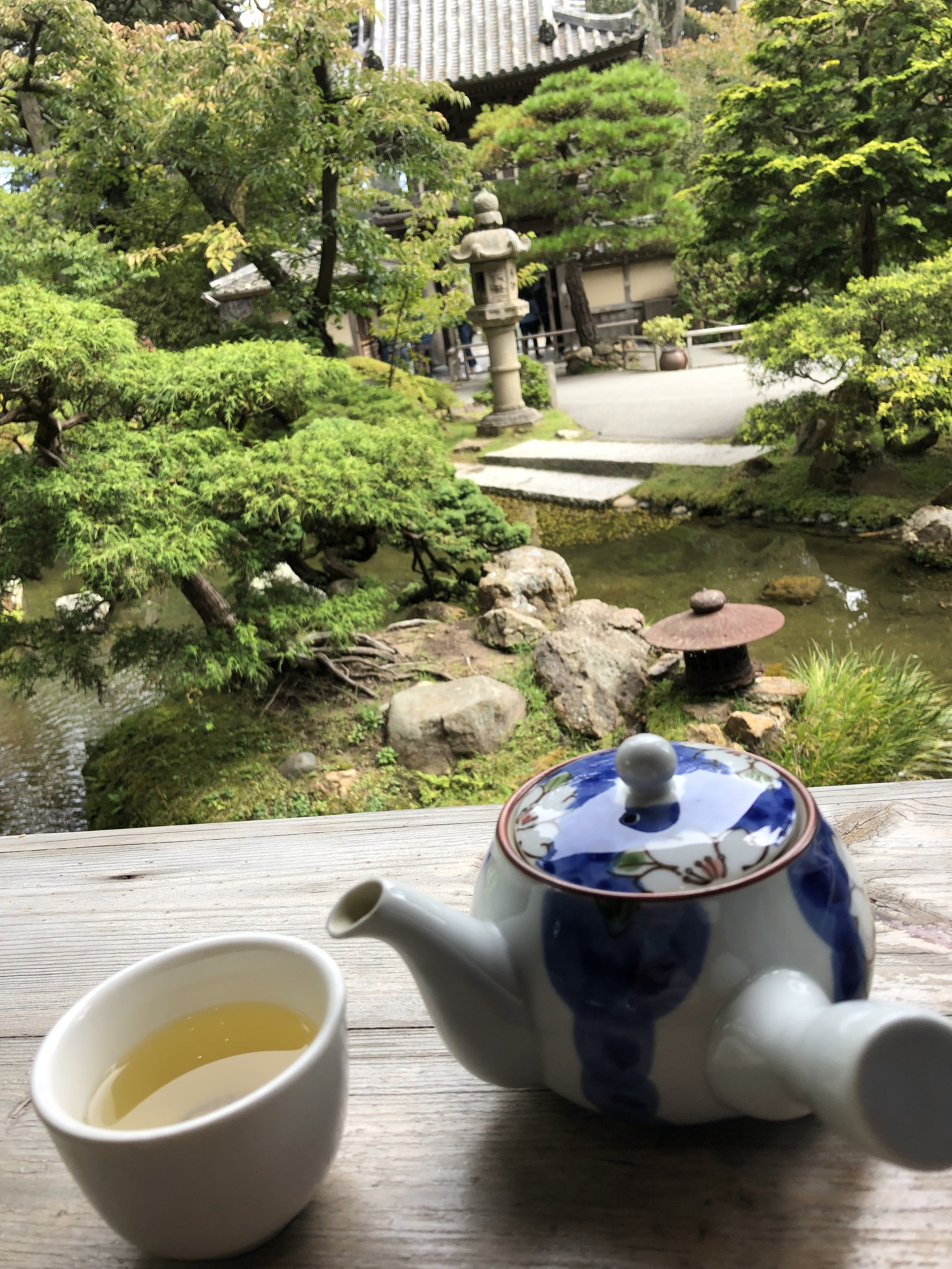Digging into deep connections between people and their stuff, Carolyn Handler Miller compares John Steinbeck's Western Flyer to her Subaru Impreza. Reflecting on shared journeys, breakdowns, and revivals, the article culminates in the poignant homecoming of the Western Flyer to Monterey, CA.
All tagged California
Manzanar: Heartbreak and Beauty
Manzanar War Relocation Center was not on anyone's travel itinerary in 1942 when the United States government ordered 11,000 Japanese-Americans to leave their homes to be detained in internment camps. These days, visitors like writer Carolyn Handler Miller come to Manzanar National Historic Site to learn the stories of the people who were important to this place and experience a challenging mix of both injustice and beauty.
Can you go home again?
Thomas Wolfe once said: “You can’t go home again.” Was he right? Carolyn Handler-Miller wouldn’t know until she tried. She was determined to find out.
My Hood Is A Trip
Can charity be as contagious as COVID? This was what Marlan Warren pondered during her walk home one morning after a surprising encounter with a man on the street in her East Hollywood neighborhood.
A Letter From Lockdown in Santa Barbara, California
Homebound with some time on her hands during the COVID-19 pandemic, Melissa Devor, reaches out from Santa Barbara, California, to share what’s happening in her world.
Surviving the Sonoma County Fire and How You Can Help
Early Monday morning on October 9, 2017, Katya Miller was roused from bed and evacuated from her Sonoma County home by raging wildfires. She takes you with her on her frightening journey, and tells how you can help.
A Rock n’ Roll Romp In the Desert
What happens when two old hippies, Charmain Coimbra and her husband, cut loose from their AARP lifestyle for a three-day California rock fest? They let nature's music rule.
I love Sunday mornings. Often I wake to the smell of coffee and know that the New York Times awaits me on the dining room table, but these enticements don’t get me out of bed. I rise to dance the samba. For no matter what the weather is in Berkeley, California for one hour, I am transported to a warm Brazilian sandy beach, a Carnaval parade line moving in unison, or a spontaneous Latin street party.
At 11:00 in the morning I take my place in Elisita’s Afro-Brazilian dance class at the downtown Berkeley YMCA. I rush to get my spot in the dance studio — behind and slightly left of her so I can watch Elisita’s every move. It’s in the second row so that, thankfully, someone blocks my view of the mirror. I am not fond of mirrors in general, and even less so when I wear spandex and no makeup.
I take off my gym shoes. My bare feet, liberated, feel the hardwood floor give as I step from side-to-side. I stretch while waiting for the music to start. I dance to escape my daily concerns and leave my worries behind. I dance rather than remain at home writing. If I arrive at class stressed or frantic, I won’t feel that way when I leave.
Editor's Note: This article is part of a new series by writer-photographer Paul Ross featuring field-tested reviews of places, products and services that enhance the travel experience. All are evaluated honestly. If something is just bad, he won’t write about it. If it's really bad, or darn right dangerous, he will warn you.
Story and photos by Paul Ross
This year I decided to celebrate my birthday early in San Francisco.
As an AARP-certified senior, it’s years since I’ve been festive about my natal day and even longer since I’ve visited “Baghdad-by-the-bay” (coined in the 1940’s by San Francisco columnist Herb Caen). Growing up in Southern California, I osmotically acquired a slight sense of residual rivalry toward Frisco. We had sun, surf, sand, and they had fog, cold, and business. As an adult, I figured it was time to explore what many locals call “the City” had to offer.
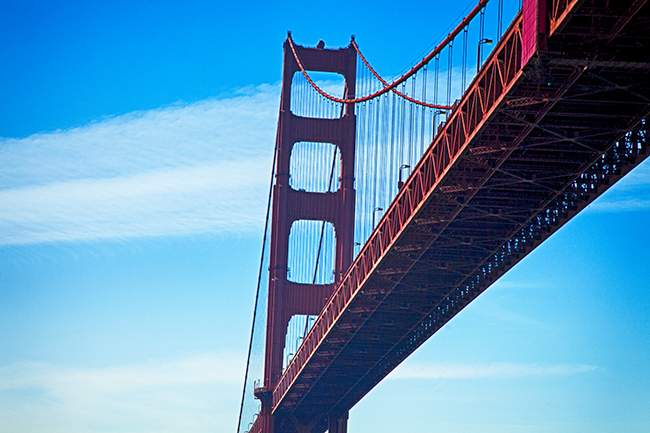 The Golden Gate Bridge. (The only ways to get this particular view are swim, jump or take a bay cruise. I recommend the last.)
The Golden Gate Bridge. (The only ways to get this particular view are swim, jump or take a bay cruise. I recommend the last.)
BAY AREA CLASSIC
I decided to start out with a Bay Area classic: the venerated Mark Hopkins hotel atop elegant Nob Hill via cable-car-carrying California Street. The hotel features a museum of the hotel’s colorful history from its Victorian era founding through its heyday housing of celebrity guests; their favorite watering hole was the Top of the Mark with its almost 360 degree view.
I was fascinated by nostalgia-laced mementos and exhibits, like a video interview with a nonagenarian who was once a nude model and photos of the big bands that had played there. “The City” preserves her majesty in ornate buildings and cable cars, one of which I rode down to Chinatown, while vowing to hike back up the really steep slope to work off Sum of my Dim dumplings.
When, on a family vacation, I first went to Chinatown as a kid, my grandfather took us all to a restaurant frequented by Danny Kaye, so of course I had a yen to go back. Located on heavily touristic Grant Avenue, the food is so tired that it could’ve been leftovers from Kaye’s days. But when I walked a few blocks from Grant to Jackson Street, I discovered Z & Y, which, despite its bland name, featured hot and spicy Szechuan delights I never dreamed of as an L.A. boy. Z&Y is on the same block as the P&R and the ABC restaurants and is as easy to find as 1,2,3.
by Izaak Diggs
It would be easy to dismiss Barstow as a wasteland: You've got the heat in the summer and the poverty year round. Faded mobile homes and salvagers making monkey shapes as they strip valuable tiles off collapsing houses. To the casual glance it is just a place to fill your gas tank or grab a burger or use a restroom. Just another desert town, just another exit or two along the interstate to somewhere else. Why was I there? Was I following a genuine spark of inspiration or had I lost my mind? All I could do was wring my hands, question my sanity, and take more notes.
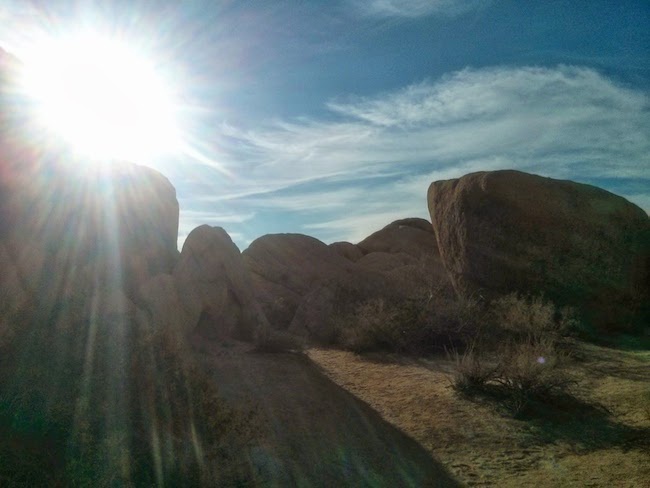
Barstow has always been a hub. Starting in the nineteenth century it served long distance travelers and the mining towns in the region. The desert is a popular place for mines: Men digging holes in the ground, getting a little closer to Hell in the hope of cheating the Devil at poker and getting a monopoly on brimstone. Gamblers with chin beards and suspenders who directed other men into the dark recesses of the earth. They oversaw the creation of towns that thrived for awhile only to die and be reclaimed by the desert after. Fortunes made and lost; a story told countless times in the history of mankind. The story of Barstow is nearly identical to scores of towns scattered like seeds throughout the Southwest.
I went down to the desert with nearly every penny I had. I stood on a salt flat, waited for the wind to rise, and tossed all the bills in the air. They were carried in every direction; to fast food restaurants and cheap motels and gas stations. Like those men with chin beards and suspenders I gambled everything I had on a dream, on an idea. I gambled it on the desert; I gambled it on all the little towns like Barstow and Lone Pine and Tuba, Arizona and Capitan, New Mexico. I rolled the dice that there was a story there lurking like a scorpion in a yucca.
story and photos by Charmaine Coimbra
I gasped for air as the constrictor of too much life strangled the air from me. So I took a trip to Death Valley to remove the choking beast.
Maybe it was the funeral I attended the day prior. Or maybe I was ready to take in the nothingness filled with life that colors the 5,219 square mile Death Valley National Park.
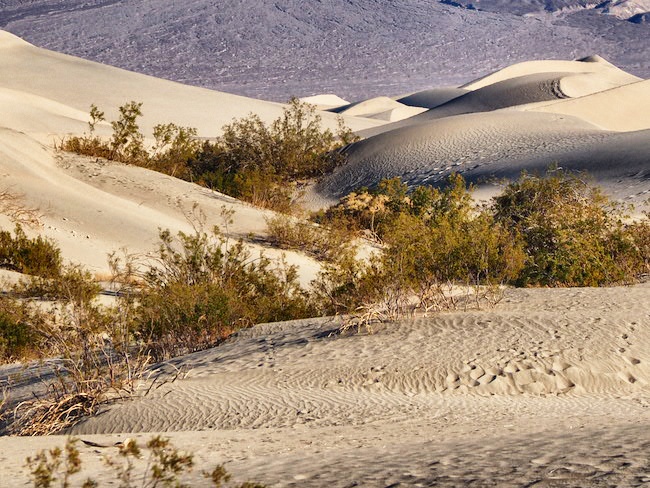
I escaped to three days of rock and sand—like a magic, colorful, sand strata bottle—hoping the trip would restore my soul's battery.
At the funeral, filled with native Californians, I mentioned that I planned to drive to Death Valley in the morning.
“You know, I’ve never gone there,” confessed more than one person.
“Why Death Valley?” another old-time friend asked.
“I can use a desert retreat,” I explained, oblivious to the fact that I was leaving a Death event to go to Death Valley.
“But you live in paradise, a few blocks from the ocean, perfect everything,” my friend countered.
“True. But sometimes I like the stripped down and naked desert. Fewer distractions.”
After a year of personal challenges, I craved a drastic change of scenery. All I wanted was two things: unearthly silence, and minimal human contact.
So I booked The Cottage at Panamint Springs Resort. Sounded like ice tea on a hot day.
Editor's Note: This is the first article in a new series by contributor Paul Ross featuring field-tested reviews of places, products and services that enhance the travel experience. All are evaluated honestly. If something is just bad, he won’t write about it. If it's really bad, or darn right dangerous, he will warn you.
Here’s what he's found for you this time:
- One vintage California hotel with a retro restaurant and a speakeasy bar.
- One steal of a deal at a top eatery in Santa Fe, New Mexico, that’s ideal for celebrating anything.
- Two pieces of gear: an easy, convenient and affordable way to communicate while overseas, and a compact, dedicated, hi-def time-lapse camera for less than $300.
by Paul Ross
California Retro
Part of my cred as a native Angeleno is that the hospital where I was born has been torn down. I lived a lot of my life in the crawling sprawl of that city. I can’t really say I grew up there because showbiz’s youth obsession has always eschewed “growing up.” Los Angeles is where history barely clings to the margins and a restaurant can boast without irony that it’s been “a tradition since this afternoon.”
I love the rarity of the Big Orange’s old buildings that survive in the corners of reinvention central. The Georgian (www.Georgianhotel.com) is just such a place; her face is a blend of Romanesque Revival and Art Deco and, like many in Southern California, she’s had a few cosmetic touchups over the years. For one who is now celebrating her 8th decade, the old girl looks pretty good.
As a nostalgic anniversary nod, the indoor restaurant and the veranda with a view of the Pacific Ocean are offering a ”Prohibition Era” menu that includes both historic cocktails and vintage culinary specialties. Among the classic imbibables are a French 75 (sparkling wine & gin), the martini-esque Negroni, the whisky-based Manhattan and Rob Roy and a harken-back-to-Hollywood’s heyday Brown Derby (bourbon, grapefruit juice and honey). All of these are in the $9 to $12 range. After sipping a couple samples, and eating bygone staples like the Monte Cristo sandwich and Waldorf salad, I was glowing like the sunset and sinking into the woven wicker chair.
Once the sun was down, I wandered inside the hotel, where deco design furnishings graced the lobby. Somewhere there was music: Sinatra, Satchmo, Cole Porter, show tunes.
“ ’want to see our secret surprise?” the bartender asked.
by Jules Older
Inspired by the new California Academy of Sciences exhibit, EARTHQUAKE, we decided to check our earthquake kit.
Yes, we have one. We’re prudent Bay Area citizens, and like most Bay Area citizens, prudent and otherwise, we live on a fault line.
The Big One is coming and coming soon—more on that, below—so get your earthquake kit in order. We did.
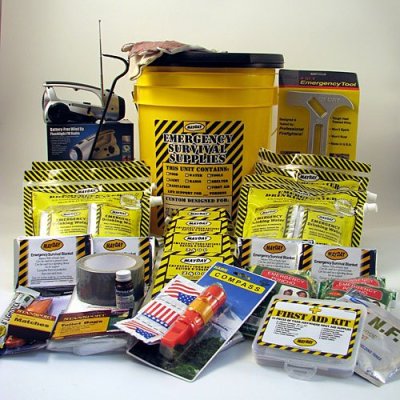
But it had been how long since we put that kit together? Five years? No, more like eight. Maybe we ought to check it.
Maybe you should check yours. Ours came as something of a surprise.
Eight years ago, we’d bought a large plastic bin that just fit the living room closet. In it, along with a few other items, we neatly packed canned beans and pesto, a can opener and plastic forks, crank-operated flashlight and radio, wipes and toilet paper, canned fruit and toothbrushes, candles and matches, disinfectant and Band-Aids, and, for reasons that now escape us, exactly forty-seven dollars.
Sealed it up and stuck it in a cool, dry place next to the ski jackets. Should last forever. We’re earthquake-ready—rock on.
Funny how fast eight years roll by. Until the Academy exhibit, we forgot all about our kit in a closet. Never opened it once.
Then, we did. Eight years later, it had shrunk… and grown.
Eyelids closed, I postpone viewing the new day. I linger in dreamtime until a familiar honking breaks the morning stillness in Benicia, California, a waterside community thirty miles north of San Francisco. The world outside my window rests under the great Pacific flyway, the north-south path of North American migratory birds.
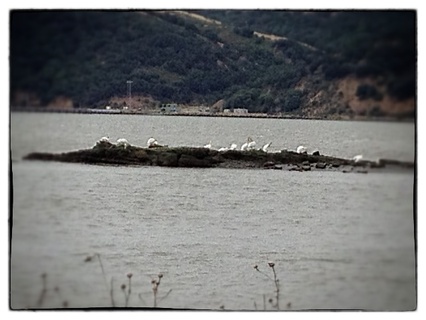 Eyes wide open; I peer through the bedroom window in time to see Canada geese, a trio in flight, noisily bound elsewhere, calling to one another, beaks pointed, necks stretched; chests lifted upward, wings flapping hard. I track their flight over Southampton Bay, the cove on Benicia’s west end. The pale gray clouds of the marine layer blanket the opposite shore of the Carquinez Strait. This wide watery ribbon funnels fully half of California’s water drainage through a deep channel on its way to the Pacific Ocean.
Eyes wide open; I peer through the bedroom window in time to see Canada geese, a trio in flight, noisily bound elsewhere, calling to one another, beaks pointed, necks stretched; chests lifted upward, wings flapping hard. I track their flight over Southampton Bay, the cove on Benicia’s west end. The pale gray clouds of the marine layer blanket the opposite shore of the Carquinez Strait. This wide watery ribbon funnels fully half of California’s water drainage through a deep channel on its way to the Pacific Ocean.
Cuddling under a soft, embroidered, cotton quilt, while I marvel at the waterfowl, Franz Kafka’s translated words come to mind.
You do not need to leave your room.
Remain sitting at your table and listen.
Do not even listen, simply wait, be quiet, and solitary.
The world will freely offer itself to you to be unmasked,
it has no choice, it will roll in ecstasy at your feet.
The universe blesses Benicia with a significant year-round presence of waterfowl—mallards, coots, the great blue heron, and snowy egret. Spring brings an upswing in activity: nesting and the annual migration of some birds to points north.
I fell in love with my wife, Rahla, when I realized how much we had in common, including the name George Van Tassel, the grandaddy of UFO-ology.
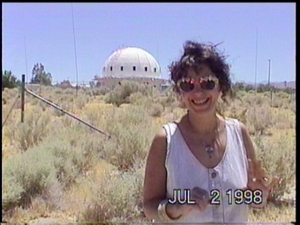
I remembered hearing him interviewed on a radio show about encountering aliens when I was growing up. But Rahla actually met him in the California desert near Twenty-Nine Palms. He showed her an alien landing site, which included a structure he built called The Integratron where aliens rejuvenated after a long interstellar trip; a UFO library and bookstore carved into the earth under the world’s largest freestanding boulder; and a luncheonette. She learned that Van Tassel had been Howard Hughes's partner, and they were going to build a landing strip for Hughes’s giant Spruce Goose fleet -- until the aliens showed up. They named the site Giant Rock Airport in honor of the aforementioned boulder.
Along with our wedding vows in Los Angeles, Rahla and I promised that one day we would visit the Integratron and Giant Rock Airport.
We moved to Scottsdale after the 1994 Northridge earthquake, but were forever driving back to Los Angeles. On one trip, we decided to leave early and fulfill our Van Tassel vow.
Recently, researchers wanted to test the effects of aging. So what did they do? They put young people in body suits that restricted their eyesight, hobbled their movement, and diminished their hearing. The measurements for the suit were based on the supposed physicality of a 74 year old. When I read this I was 74 and it made me so mad I decided I would celebrate my upcoming 75th birthday in an age-affirming way.
When the Los Angeles Times reported in July that approximately two-thirds of extra-virgin olive oil (EVOO) sold in California grocery stores isn’t so virgin after all, and that the problem comes from imported olive oils, I dashed to my pantry, flung open the door, and sighed. My EVOO bottle was on the list of claims-to-be-extra-virgin-but-don't-believe-it olive oil. The alleged EVOO from Italy in my pantry apparently shacked up with cheaper canola, seed or nut oils—thereby losing any hint of virginity. Shame on my olive oil, and shame on Italy.
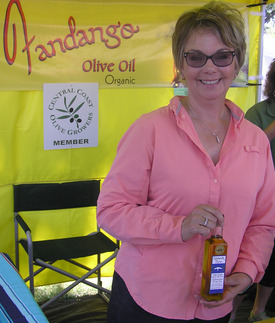 Arbequina Extra Virgin Olive Oil from Kitehawk Farm in Atascadero, Ca.Double shame on me. One, the report went on to say, “No such mixing was found in the recent tests of products produced in California…” and, two, the nearby foodie-town-in-training, Paso Robles, CA, is home to over two dozen olive farms that co-habit with the burgeoning world-class local vineyards. Why did I not buy local? I preach it, so my bargain EVOO shopping vs. quality EVOO shopping was about to change.
Arbequina Extra Virgin Olive Oil from Kitehawk Farm in Atascadero, Ca.Double shame on me. One, the report went on to say, “No such mixing was found in the recent tests of products produced in California…” and, two, the nearby foodie-town-in-training, Paso Robles, CA, is home to over two dozen olive farms that co-habit with the burgeoning world-class local vineyards. Why did I not buy local? I preach it, so my bargain EVOO shopping vs. quality EVOO shopping was about to change.
Last week, I slipped into the 7th Annual Olive Festival in Paso Robles, and it was a voyage into the new world of an ancient food. Mostly family-owned farmers/producers poured samples of their oils for visitors to taste. Vendors supplied bread for dipping—but I watched as the purists went directly for the straight on sipping. Without a clue as to how oils are tasted, I chose the purist route.
There are times, and there are people, that we desire to erase even while we don't recognize why we want to erase them; so it is with a trip I embarked on some years ago, to the California coast.
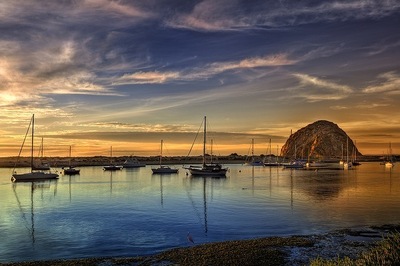 by kevincole via Flickr (common license)The trip was supposed to be the sealing deal in a relationship that had quivered on the lip of "commitment"—that ethereal concept—for two years, embroidered with camping trips, lots of laughter, a stringent lack of money, and the absence of those family members or friends who might have demurred at the sight of a nice middle-aged East coast women of liberal persuasion and a carrot-haired, Boston speaking, child of old-ward Democratic politics who was making a living, such as it was, selling orange juice to restaurants out of his beat-up car. But so it was. And the trip, which he had proposed and which I had accepted with the lurking sense that something was to be decided, did decide something: that we couldn't go on. And so we didn't. Not, it seems to me now, out of a fundamental problem, but because I couldn't really see the coastline we were passing because of my preoccupation with the failures, as I saw them, of the relationship.
by kevincole via Flickr (common license)The trip was supposed to be the sealing deal in a relationship that had quivered on the lip of "commitment"—that ethereal concept—for two years, embroidered with camping trips, lots of laughter, a stringent lack of money, and the absence of those family members or friends who might have demurred at the sight of a nice middle-aged East coast women of liberal persuasion and a carrot-haired, Boston speaking, child of old-ward Democratic politics who was making a living, such as it was, selling orange juice to restaurants out of his beat-up car. But so it was. And the trip, which he had proposed and which I had accepted with the lurking sense that something was to be decided, did decide something: that we couldn't go on. And so we didn't. Not, it seems to me now, out of a fundamental problem, but because I couldn't really see the coastline we were passing because of my preoccupation with the failures, as I saw them, of the relationship.Now, fifteen years have passed in the breezy way that great swaths of time pass at this time in my life, and I'm returning, with one of my sons, his wife, and their four year old boy to the same coastline, the itinerary, designed by my beloved daughter-in-law, covering the same ground, stopping at the same places:
Hidden Venice Beach: A Walking Tour
Someone once wrote that if you tip the United States on edge, everything that’s loose will slide down to Los Angeles. I would add, if you tipped Los Angeles on edge, it will all slide down to Venice Beach.
Few visitors stray far from the boardwalk. Those who don’t miss the best show of all -- the other attractions that make Venice Beach the largest spontaneous outdoor theme park/playground and one of the most interesting communities in the world. To discover the hidden highlights of Venice Beach, just follow this easy, leisurely walking tour. It should take about three hours or more if you want to shop, linger, and eat, or less than three if you are in a hurry.
by Jules Older
Back when I was a grad student in New York, I was lured to Monterey in California. The words of John Steinbeck are what lured me.
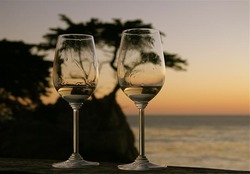 © Effin OlderA Baltimore boy who'd discovered Steinbeck in my teen years, I wanted — no, needed — to see and smell and walk the streets where Doc and Mack, Hazel and Wide Ida, Danny and Pilon plied their trades and plotted their scams.
© Effin OlderA Baltimore boy who'd discovered Steinbeck in my teen years, I wanted — no, needed — to see and smell and walk the streets where Doc and Mack, Hazel and Wide Ida, Danny and Pilon plied their trades and plotted their scams.
Now, those same Steinbeck characters help entice three-to-four-million tourists every year and have, in the words of Diane Mandeville, vice president of Cannery Row Company, “changed us from a dirty, smelly industrial town to a clean and green tourist town.”
That’s all well and good, but it wasn't just The Grapes of Wrath that upgraded Monterey. It was also the grapes of Chardonnay, Pinot Gris, Cabernet, Chardonnay and almost every other potable varietal under the sun. Like Napa and Sonoma to the north, San Luis Obispo and Santa Barbara to the south, Monterey is now serious wine country.
And it was on my last trip to Monterey that I got into the fermented grape juice.
For the same sort of reason — if ‘reason’ be the word for it — that I skied the French Alps with French-speaking Quebecois, sightsaw Kyoto with one of those Japanese tour parties and toured Israel with the Black Hebrews of Jerusalem, I now found myself in Monterey with a group of dedicated oenophiles.


